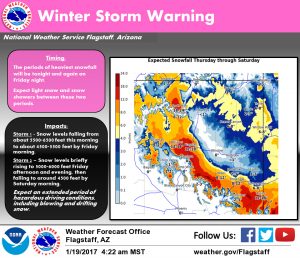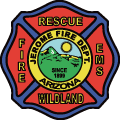 Winter Storm Warnings have been issued with two separate snow/rain storms is bound to make some travel challenges if you’re in the area.
Winter Storm Warnings have been issued with two separate snow/rain storms is bound to make some travel challenges if you’re in the area.
Winter Driving Tips
If you must drive during a winter storm, safety should be your number one concern.
Here are some tips on how to get ready for winter driving conditions, and how to handle them once you’re in the thick of a winter storm.
Place some extra clothing and emergency items in your vehicle; these will come in handy if you break down in very cold weather. It doesn’t take much — assemble a basic kit including a pair of gloves, weather-resistant pants and/or coat, maybe an old pair of boots, a blanket, jumper cables, a flashlight with some extra batteries, and a windshield
scraper (and maybe a de-icer). As well has some snacks and water. Some suggest placing a bag of kitty litter in your trunk, to put under the wheels if you find yourself in a slippery spot.
Watch for black ice. While a shiny road surface indicates an obviously wet or icy road, a road covered with black ice will look a little different. Keep an eye out for pavement that
is slightly darker and a little duller looking than the rest of the road surface– this may indicate that black ice is present. Because black ice is so tricky to detect, a driver may not realize there is an icy road surface until his car begins to slide. Here are some tips on how to drive on black ice and slippery roads.
1. As soon as your car begins to slide on black ice, take your foot off the gas pedal. In fact, the last thing you want to do is give your car more gas. It is very important to slow down when you are driving on black ice or in any other winter road conditions.
2. Don’t slam the brakes. While it may be a natural instinct to slam on your brakes, this will only cause your car to lose control and slide even more. Tap the brake pedal lightly instead of pushing down hard on it.
3. Look for trouble spots ahead. If you have an idea that there may be black ice ahead (if you see cars ahead of you sliding, for example), downshift to a lower gear before you come onto the black ice. The lower gear will force you to drive more slowly and it will give you better control of your car.
4. If your car does begin to skid on the ice, turn the wheel in the direction of the skid. This should help to steer your car back on the right track.
5. Leave plenty of space between your car and the other cars on the road. When driving on icy road conditions, stay well behind the car in front of you (at least a couple of hundred feet)–this is definitely not the time to tailgate. Even if you feel confident that you know how to drive safely on black ice, that doesn’t mean the driver in front of you does. Be prepared in case other cars start to slide.
6. Even trucks or a big sports utility vehicles can slide. While 4-wheel drive vehicles are great for driving in heavy snow, you’re on your own when it comes todriving on black ice. In fact, 4-wheel drive vehicles have no advantage over regular cars when it comes to driving on black ice, so be sure to take the necessary safety precautions no matter what type of vehicle you are driving.
7. Other precautions:
Drive with your low beam headlights on even if it is daytime. This will make your more visible to the other cars on the road.
Make sure your tire tread is in good condition as part of your basic car maintenance routine. Worn tires will make it much more difficult for you to drive on black ice. Make sure there is plenty of traction between your tires and the road surface.
Black ice is most commonly found on roads that run around bodies of water (such as lake and rivers), in tunnels and in shady or rural areas.
Bridges and overpasses are also common spots for black ice to form.
Use extra caution on bridges and overpasses, where the road surface freezes more quickly. Even if you have been cruising down the highway with no problem, an overpass or bridge can be unexpectedly icy.
Be sure to wear your seatbelt. Winter driving is always unpredictable so be prepared for the unexpected and keep yourself safe!




